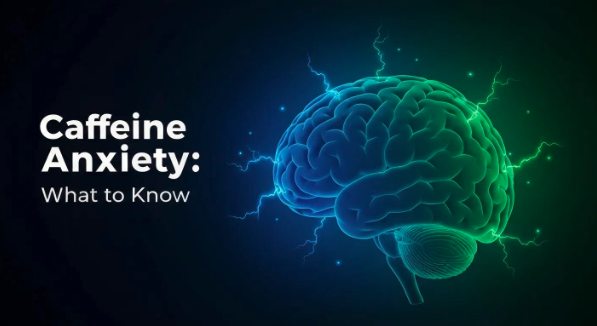Navigating Mood Fluctuations Every Day
Discover tips for navigating mood fluctuations in daily life and managing emotions with confidence.

Understanding Mood Swings
Mood swings refer to sudden and intense changes in emotions and feelings. These fluctuations can sometimes be normal, but they can also indicate underlying mental health issues.

Normal vs. Abnormal Mood Swings
Mood swings can be categorized into normal and abnormal. Normal mood swings are commonly related to daily experiences, fatigue, and biological rhythms. For instance, periods of stress or transitions may result in temporary mood fluctuations. On the other hand, abnormal mood swings are often linked to mental health conditions like bipolar disorder or borderline personality disorder, where mood changes may be more extreme and prolonged.
Type of Mood SwingDescriptionDurationNormalLinked to life events and stressorsTemporaryAbnormalIndicates underlying mood disordersCan last for hours, days, or weeks
Individuals with bipolar disorder experience more intense and longer-lasting mood swings, while those with borderline personality disorder may encounter frequent swings triggered by minor incidents.
Triggers for Mood Fluctuations
Various factors can trigger mood fluctuations. Physiological aspects, such as neurotransmitter levels, can significantly influence mood. Factors that may contribute to these changes include:
Mood swings can also be a regular part of life influenced by changes in environmental factors or daily habits. For more insight, see our articles on lifestyle changes to manage mood disorders and the role of sleep in mood regulation.
Persistent mood fluctuations may signal an underlying condition requiring professional help. Recognizing such patterns can lead to more effective management strategies, including mood tracking. To learn about this, check out our resource on mood tracking: tools and benefits for managing mood disorders.
Types of Mood Disorders
Mood disorders encompass a range of conditions that primarily affect emotional well-being. Understanding the impact of these mental health conditions and identifying their symptoms is crucial for effective management and support.
Impact of Mental Health Conditions
Mental health conditions, such as depression and bipolar disorder, can lead to extreme mood fluctuations. Individuals may experience feelings of deep sadness, emptiness, or irritability followed by moments of heightened happiness. These emotional swings can be distressing and significantly affect daily functioning and overall quality of life.
According to the Mayo Clinic, mood disorders are more prevalent in women and can further complicate emotional stability. Physical health concerns, especially chronic or terminal illnesses, often impact mood variances, with hormonal changes during events like pregnancy and menopause exacerbating symptoms.
Mood DisorderDescriptionCommon SymptomsDepressionPersistent feelings of sadness and loss of interestLow energy, feelings of worthlessness, hopelessnessBipolar DisorderCharacterized by alternating periods of depression and maniaExtreme energy, impulsiveness, and mood swingsPremenstrual Dysphoric DisorderSevere emotional and physical symptoms before menstruationIrritability, anxiety, and mood swings
Identifying Symptoms
Recognizing symptoms of mood disorders is essential for seeking appropriate help and managing daily life effectively. Symptoms can vary widely based on the specific disorder but often include:
Mood swings can also be a common part of life. Conditions such as recognizing mood disorder symptoms in children and adolescents and mood disorders in the elderly: unique challenges and treatments highlight the varying experiences across different life stages.
Identifying early signs of mood dysregulation, such as irritability and emotional instability can support better management strategies. For further reading, see our articles on coping with emotional instability and understanding irritability in mood disorders.
Management Strategies
Managing mood fluctuations is crucial for maintaining emotional balance. Several strategies can help individuals navigate these challenges, including coping skills for stress and psychotherapy combined with medication.
Coping Skills for Stress
Coping skills are essential tools that anyone can learn to manage stress and reduce the intensity of mood swings. These skills involve dealing with life's stressors and disappointments effectively. Some of the coping strategies that can be beneficial include:
Coping SkillDescriptionSelf-MassageProvides stress relief by reducing muscle tension, pain, and anxiety. This technique can be enhanced with aromatic oils and mindfulness or deep breathing. HelpGuideProgressive Muscle RelaxationInvolves systematically tensing and relaxing different muscle groups, familiarizing the body with tension and relaxation to better manage stress. HelpGuideVisualizationA form of guided imagery that allows individuals to imagine peaceful scenes, promoting relaxation and reducing anxiety. This technique can be practiced individually or with guided audio. HelpGuide
These coping strategies can help improve resilience against mood fluctuations. For additional approaches, consider exploring lifestyle changes to manage mood disorders for more resources and techniques.
Psychotherapy and Medication
Psychotherapy and medication play significant roles in treating mood disorders and aiding individuals in managing their emotions. Psychotherapy helps individuals recognize their triggers, develop coping mechanisms, and maintain balanced moods. Different therapeutic approaches may include cognitive-behavioral therapy (CBT), mindfulness-based therapy, and interpersonal therapy.
Medications, such as antidepressants or mood stabilizers, might also be prescribed to assist in regulating mood and alleviating symptoms associated with mood disorders. Consulting with healthcare professionals is essential in determining the most suitable treatment options.
Understanding the importance of both psychotherapy and medication can greatly enhance an individual's ability to maintain emotional well-being. For those interested in further learning about mental health management, resources on alternative and complementary therapies for mood disorders may provide additional support.
Navigating mood fluctuations in daily life is a journey that requires a multifaceted approach. Combining effective coping skills with professional psychotherapy and medication can offer individuals the necessary tools to manage their emotional health better.
Lifestyle Factors
Lifestyle choices play a crucial role in managing mood disorders. Two key factors influencing mental well-being are diet and exercise.
Diet and Mood
Nutrition significantly affects mental health, suggesting that a balanced diet can be an essential component in navigating mood fluctuations in daily life. Research indicates that adhering to healthy eating habits, such as the Mediterranean diet—which consists of fruits, vegetables, nuts, and legumes—can reduce the risk of depression.
Conversely, diets high in refined carbohydrates and sugars, which result in a high glycemic index, can contribute to depressive symptoms. These dietary patterns have shown an association with increased risk of mental health issues [3].
Dietary ComponentEffect on MoodMediterranean DietReduced risk of depressionHigh Glycemic Index DietIncreased risk of depressionDiets high in calories and saturated fatsPotentially increased risk of depression related to inflammation
Moreover, alterations in the gut microbiome resulting from dietary choices can influence mood and depressive symptoms [3]. Maintaining good nutrition not only impacts mental health but can also act as a preventative measure for mood disorders.
Exercise and Mental Well-being
Regular physical activity is another crucial element for enhancing mental health. Exercise releases endorphins, chemicals in the brain that act as natural painkillers and mood elevators. Studies show that consistent engagement in physical activity is associated with reduced symptoms of anxiety and depression.
Type of ExerciseMental Health BenefitsAerobic ExerciseReduces anxiety, stress, and depressive symptomsStrength TrainingEnhances overall mood and builds self-esteemYoga and MindfulnessPromotes relaxation and emotional stability
Incorporating regular exercise into one's routine can improve mood stability and overall well-being. For those seeking more comprehensive methods to enhance mood, looking into various lifestyle changes to manage mood disorders can be beneficial.
Therapeutic Techniques
When navigating mood fluctuations in daily life, employing therapeutic techniques can significantly contribute to emotional balance and well-being. Two effective approaches are meditation and relaxation practices.
Meditation and Relaxation
Meditation is a powerful tool for restoring calm and inner peace. It can help alleviate stress and can be practiced in various settings, from walking to waiting in line, or even during a meeting [5]. Various meditation methods can be adapted to individual preferences and lifestyles. Here are some popular forms:
Meditation TechniqueDescriptionBody Scan MeditationFocuses on different body parts, promoting connection with bodily sensations while fostering relaxation [6].VisualizationInvolves imagining peaceful scenes, enhancing the release of tension and anxiety. This can be practiced alone or with guided audio [6].
Incorporating these meditation techniques into daily routines can help individuals manage stress and regulate their emotions effectively.
Relaxation Practices
Relaxation practices complement meditation by promoting physical and mental relaxation. One notable technique is progressive muscle relaxation, which involves systematically tensing and relaxing different muscle groups. This method enhances awareness of tension and release, helping individuals respond better to stress-related muscle tension.
Another effective relaxation practice is self-massage, which can provide significant stress relief by reducing muscle tension, pain, and overall stress levels. Using aromatic oils can further enhance the experience when combined with mindfulness or deep breathing techniques [6].
By integrating these meditation and relaxation techniques into daily life, individuals can cultivate emotional stability and resilience. For more insights on managing mood disorders, explore lifestyle changes to manage mood disorders or consider alternative and complementary therapies for mood disorders.
Seeking Help
When to Seek Assistance
Recognizing when to seek help for mood fluctuations is essential for maintaining emotional well-being. Individuals should consider reaching out for assistance if they experience mood swings that:
It is vital to pay attention to behavioral patterns and identify triggers that may worsen mood swings, such as dietary changes, stress levels, or trauma [7]. Should these symptoms persist, seeking help from a mental health professional may be necessary, especially since individuals with mood disorders face a heightened risk of suicide, particularly if the condition is severe or coupled with substance issues.
Support Options
There are various support options available for those struggling with mood fluctuations. The following table highlights some key resources:
Type of SupportDescriptionTherapyIndividual therapy, such as cognitive behavioral therapy (CBT), can help individuals manage thoughts and behaviors associated with mood disorders. Group therapy provides a supportive environment to discuss experiences with others.MedicationAntidepressants or mood stabilizers may be prescribed by a healthcare provider to help regulate mood. Regular follow-ups are essential to monitor effectiveness and side effects.Crisis HotlinesImmediate support is available through crisis hotlines, offering 24/7 assistance for those experiencing suicidal thoughts or severe emotional distress.Support GroupsJoining support groups allows individuals to share experiences and coping strategies with others facing similar challenges. Consider looking for local or online options.Educational ResourcesWebsites and organizations like the National Alliance on Mental Illness (NAMI) offer valuable information and resources on managing mood disorders.
Access to mental health services and support networks can greatly enhance coping mechanisms for those navigating mood fluctuations in daily life. Seeking help is a proactive step toward understanding and managing one's emotional health. For more information, explore our article on lifestyle changes to manage mood disorders and consider various therapeutic avenues like alternative and complementary therapies for mood disorders.
References
[2]:
[3]:
[4]:
[5]:
[6]:
[7]:
[8]:
More Resources
A team ready to start your journey.
Get in touch — today.
We are a safe space – a haven for exceptional individuals to receive discreet, personalized, in-person treatment and care.
.avif)



.webp)






